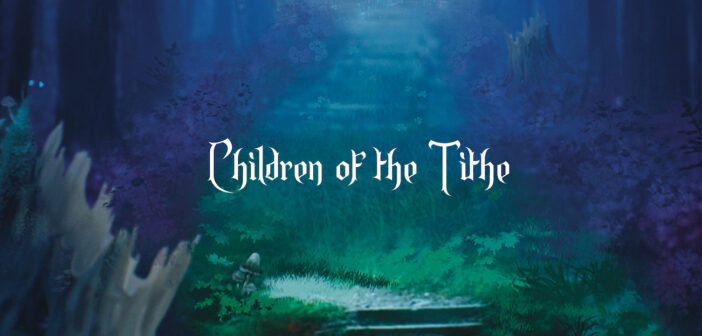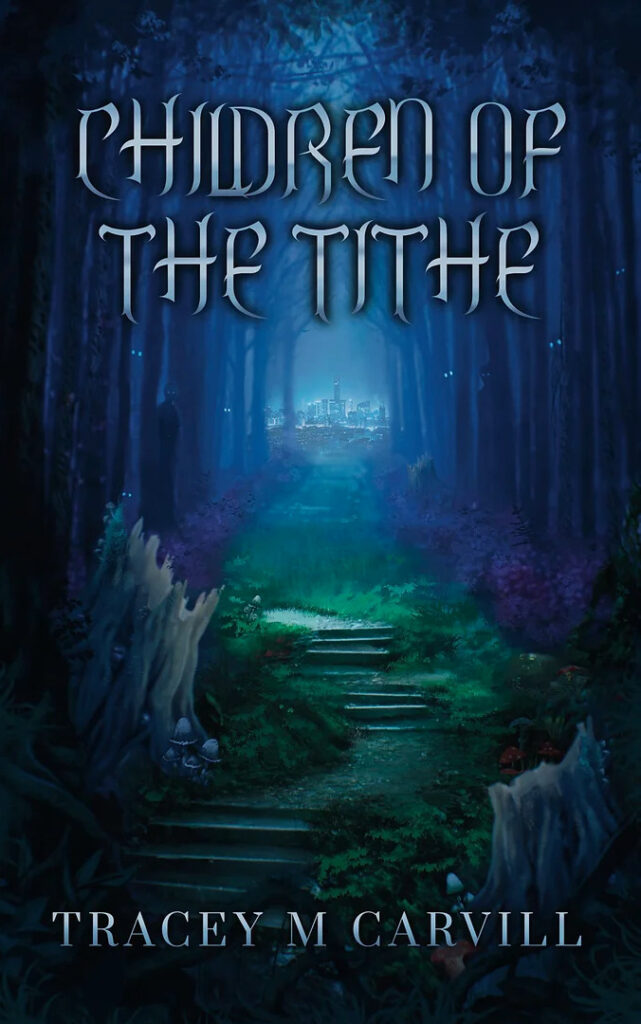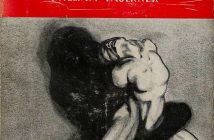Perfectly imperfect, Children of the Tithe is a book unlike most people will read. One thing's for sure though, it's a novel best kept off the bookshelves of children, unless you feel like scaring them with worlds of dark and unfamiliar tales.
When I sat down to read Children of the Tithe, I didn’t think I would have a revelation. Tucked in bed, kindle in hand (I was provided a review copy by SmashBear Publishing, but opted to purchase the book and support the author as well), I was surprised to discover that good literature isn’t always perfect. Even with Carvill‘s excellent world-building, use of form, genuine characters, and magical recallings of folklore and fairytales, there were still moments where I stopped, thought to myself, “oh”, and then continued reading anyways. It’s the same feeling I sometimes get with authors I love, Stephen King‘s ‘Carrie’, Terry Pratchett novels, or even Ruth Ozeki – all novelists who are master craftsmen, but by no means perfect. So while Children of Tithe has its faults, its merits quickly outstrip them, and soon I fell into a steady pace of Carvill’s horrifying world that gave me enough questions to keep begging for answers.
Children of the Tithe, centers on the protagonist, Heidi, and a group of young adolescents and children who are whisked away to a dangerous land as a result of a tithe. After an ancient promise is broken, the toll on these children means they often find themselves fighting for survival in a land of fairytales more akin to the times before Disney than most will find comfort in. Think of the delicious darkness in the Brothers Grimm tales. As a contemporary revision of the darker sides of fairytales and folklore, Carvill begins to craft herself a novel like Elizabeth J. Braswell‘s A Twisted Tale series (but much more twisted), and closer to the phenomenal (and my favourite book) John Connelly‘s The Book of Lost Things. Carvill is a master of darkness, and while she never quite reaches Connelly’s own heights, it’s an admirable, and often startling foray into a burgeoning genre of retellings.
It takes time to find your way with Children of the Tithe. Heidi sometimes feels a little too precocious for her age, and the justification lands a little bit too heavy-handed at the start. That said, Heidi is warm, and caring, and Carvill’s craftmanship of her character begins to make sense as a way of bridging the gap for an intended older audience. Make no mistake, this a tale best left off your children’s bookcase because it often lacks a certain sense of hope, even as Heidi tries to stay buoyant in the face of countless disasters, but this works in helping endear her to the reader. Heidi is also joined by a host of different characters, all with pasts or secret agendas and fears, that create an overwhelming sense of you never knowing which character Heidi should trust. Countless times I found myself wishing to kick Heidi for making such an unthought-out decision, but at the same time, she’s just a child at the end of the day, and Carvill is excellent at making those decisions work as a result of her age.
As mentioned prior, Carvill also manages to make great use of world-building, often relying on the splendour and beauty of places that juxtapose the monsters and horrors that lay within. It’s a world found in the most stunning reams of fantasy, that also isn’t so obnoxiously crafted as to overload the narrative. Each new location is a stunning exploration into this new world, and while sometimes the geography didn’t seem to quite match up or make sense – a certain place I’m never quite sure of when and how the characters leave it – I let my mind become lost in the inner workings of the narrative and world and let myself believe that it somehow was possible. Because that’s the magic of Carvill’s writing, she’s begging us to believe in a world of impossibility and horror, and it works, finding its stride in action and emotional growth, while being grounded by sub-chapters/sections that pull us back into the real world.
Children of the Tithe isn’t your typical novel. It’s not one form of writing, but one that coalesces in different narrative forms (interviews, newspapers, and reports) and draws a narrative outside in the mundane world that sits parallel to the make-belief. It helps with the pacing, breaking up heavy chapters with a moment of reprieve that attempts to answer questions while posing a few new ones in the process. While perhaps the leap in some of the interviews and theories are harder to swallow than others, I still couldn’t help but feel that Carvill was finding a rhythm with her craft. It’s a rhythm that perhaps feels predictable – every situation you think will go bad inevitably as it does so, and even the few small wins are tainted by something heinous – but I also find that more a criticism of the genre of folktales and fairytales (haunted by an air of predictability) than in Carvill’s writing. In that respect, she embraces it, makes it work as best as it can, and distinguishes herself as a true frontrunner in this genre.
I enjoyed Children of the Tithe, because, on one hand, it’s a novel that feels perfectly imperfect, while on the other, it’s a great foray into making some familiar feel unfamiliar. As the debut novel for Carvill, I think she establishes herself as an upcoming force in literature; telling stories of intrigue, fear, and occasional triumph. Ultimately, Carvill’s book is a win in itself, and I can’t wait to see what she writes next.
Children of the Tithe is out now. You can find out more or purchase the book by clicking here.





